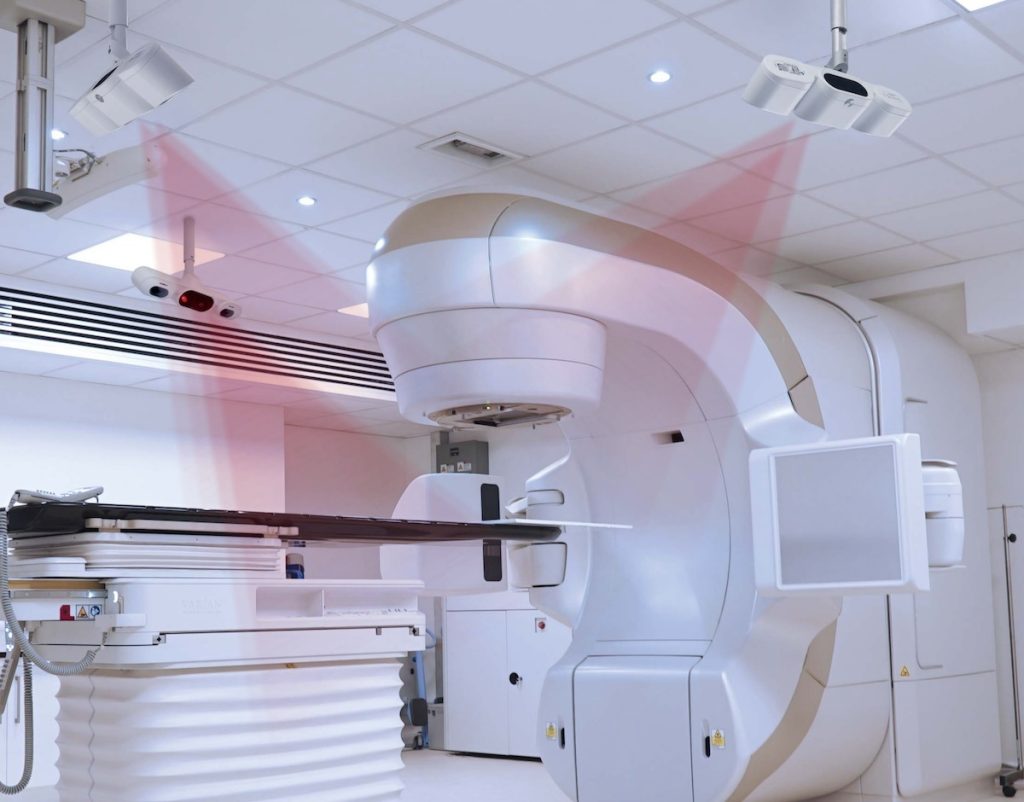

AlignRT® is an innovative technology which increases treatment accuracy and patient comfort during radiation therapy.
Quickly growing in use around the world, AlignRT® uses a 3D camera system to track your body surface in real time and may be used to help position you accurately before radiation therapy, and ensure you keep that position during treatment. Using your external skin surface, the technology monitors your movement and knows exactly where you are at any moment to within a fraction of a millimeter. AlignRT® can be used from head to toe.
How does it work?
AlignRT uses 3D cameras, mounted to the ceiling, that feed data into a software program. Those cameras track the surface of your body during radiation therapy setups and treatment, and they can detect even slight movements, so the beam can be paused automatically if you move out of position. Older systems for detecting movement during treatment rely on the use of lasers lined up with permanent tattoos or the use of cctv cameras that aren’t connected to the beam.

Why choose AlignRT?
Accuracy
AlignRT® sets up and tracks your radiation treatment position with submillimeter†, accuracy.
Safety
AlignRT helps ensure you stay in the desired position during treatment. AlignRT has been shown to reduce additional X-Ray imaging.1
Comfort
AlignRT ensures you are in the correct position and has been shown to reduce treatment time. Having accurate and safe treatment is beneficial as the prostate can often move over time. 2.3.4.
A shorter treatment time could also result in more comfort, especially because you must have a full bladder during setup and treatment.
Tattoo and mark-free treatment
AlignRT may eliminate the need for you to have permanent tattoos as part of your treatment.
AlignRT is in 24 out of the top 25 “Best Hospitals for Cancer”
as tracked by the U.S. News and World Report

